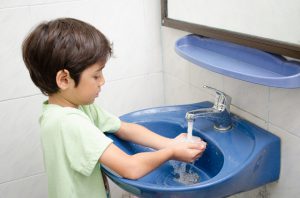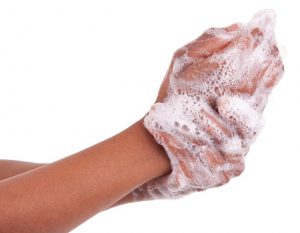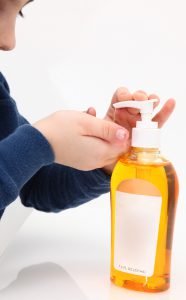 It’s cold and flu season. Your kids are exposed to a variety of things in school besides reading, writing and arithmetic. They also come in contact with germs from fellow students. In addition to becoming sick themselves, students are likely to share with the entire family. So yes, your kids as well as co-workers, friends and other family members may be making you sick.
It’s cold and flu season. Your kids are exposed to a variety of things in school besides reading, writing and arithmetic. They also come in contact with germs from fellow students. In addition to becoming sick themselves, students are likely to share with the entire family. So yes, your kids as well as co-workers, friends and other family members may be making you sick.
Germs are everywhere in our environment. They usually enter the body through the eyes, nose and mouth. The goal is to minimize exposure to germs and keep your family healthy. The most effective method of reducing the spread of infectious diseases is as simple as frequent handwashing. However, it may not be quite that easy because the majority of people don’t wash their hands properly.
How to properly wash your hands
It may seem simple but the ingredients for clean hands are soap, running water and time. According to one study, only 6% of people wash their hands for the recommended time and many did not use soap at all.
Follow these steps for clean hands:
- Wet your hands with clean running water and apply soap.
- Lather your hands by rubbing the together with the soap. Be sure to lather the backs of hands, between fingers and under nails.
- Scrub hands for at least 20 seconds.
- Rinse hands under clean, running water
- Air dry or use a clean towel.
Do you need special soaps?
 You may feel that using antibacterial soap will reduce your risk of getting sick or spreading disease but this hasn’t been proven to be more effective than washing with plain soap. The U.S. Food and Drug Administration (FDA) has expressed concern over whether adding antibacterial ingredients to consumer products is recommended. For more information, go to Antibacterial Soap? You Can Skip It, Use Plain Soap and Water.
You may feel that using antibacterial soap will reduce your risk of getting sick or spreading disease but this hasn’t been proven to be more effective than washing with plain soap. The U.S. Food and Drug Administration (FDA) has expressed concern over whether adding antibacterial ingredients to consumer products is recommended. For more information, go to Antibacterial Soap? You Can Skip It, Use Plain Soap and Water.
What about hand sanitizers?
If soap and running water aren’t available, an alcohol-based sanitizer if better than nothing. Choose a sanitizers with at least 60% alcohol. Hand sanitizers aren’t generally effective for very dirty or greasy hands.
To use hand sanitizers properly:
- Make sure all dirt and other organic matter is removed from hands
- Put about a dime-sized amount in the palm of one hand or use a sanitizing wipe.
- Rub surfaces of both hands together until dry
Make handwashing a family affair
Clean hands can certainly reduce the risk of illness. Encourage all family members to properly wash their hands before eating, after playing with pets, after sneezing, when coming in from the outside as well as other activities that increase likelihood of coming in contact with germs.
For more information on handwashing, hygiene and hand sanitizers, please go to http://edis.ifas.ufl.edu/topic_handwashing
Sources:
Keeping Hands Clean. Centers for Disease Control and Prevention. https://www.cdc.gov/healthywater/hygiene/hand/handwashing.html
Centers for Disease Control and Prevention. . Show Me the Science – How to Wash Your Hands. https://www.cdc.gov/handwashing/show-me-the-science-handwashing.html
 0
0
